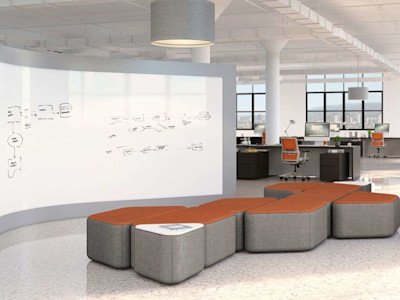Creative Employees Don't Want Your Open Office Plan

It's a fact: open office plans don't work for all employees. Despite the intention being to foster communication and teamwork, people find the lack of privacy distracting. They'll even manufacture privacy by placing obstacles on their desks that delineate their boundaries or investing in noise-canceling headphones. Those who are able to work from home choose to do so more often, leading to an increase in electronic communication, not a decrease. Even those in open offices communicated more through electronic forms, a study conducted by The Royal Society found. For the study subjects, face-to-face interaction decreased by a whopping 70%.
Open Offices: Are They Killing Creativity?
But creative employees could have told us that. A WeTransfer study showed 65% of creatively minded employees require quiet to work. While a certain amount of white noise can actually spawn inspiration, anything that does not blend into mild background noise will quash the flow of ideas. Frustrated workers "check out" by donning headphones or finding somewhere else to work, breaking up the camaraderie intended by an open office. Another issue is visual privacy. Those who are on display are less likely to try new processes or test ideas for creative solutions to company problems. People are comfortable with the familiar and would rather not risk scrutiny or judgment from coworkers and managers in close proximity if there's a chance their attempts at innovation could fail in front of an audience.

LEARN MORE ON INC.COM
Want to explore more? Check out these related topics:



